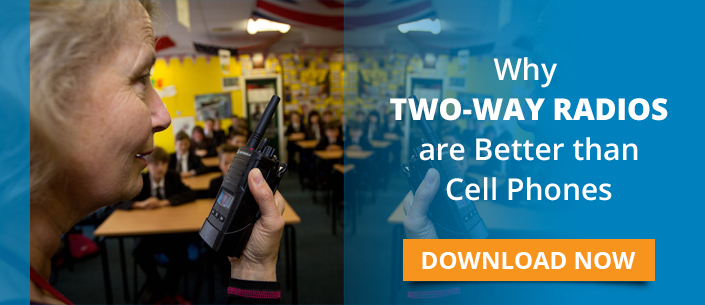From college campuses to K-12 classrooms, schools across the country are tasked with improving student safety and staff communication, especially in the wake of an emergency or violent situation. However, a limited budget can make these improvements seem daunting (or even impossible) for administrations to make.
Before we dive in and explore some various communications solutions for schools, here are a few insights courtesy of Motorola Solutions to help you visualize this issue.
- 99% of educators state that student and staff safety is their number one priority
- 74% of schools have reported at least one violent crime incident within the last year
- 64% say that staff communications are “somewhat prepared” for an emergency
- 40% of schools say their communications system needs to be improved
Obviously, the need for improved safety and communication within our schools is clear. So how can educators adopt new technologies and systems in order to protect their students/staff, all while coming in under budget? Here are three powerful Motorola communications solutions aimed at just that:
Two-Way Radios
If you want to connect your entire faculty like never before, you should explore two-way radios. These portable devices are easy to carry all day, provide long-lasting battery life, and are far more practical than using cell phones on campus.
Two-way radios offer superior coverage and call quality when compared to cell phones, and, you are able to purchase them at a one-time cost (unlike having recurring monthly payments of faculty smart phones). You can learn more about why two-way radios are better than cell phones here.
In a critical situation, such as an injured student or campus intruder, your staff needs to be connected with each other and with law enforcement at the push of a button. Motorola radios can do just that via push-to-talk (PTT) technology, a great system for emergency preparedness.
Bi-Directional Amplifiers
Is your school a large, old building – or even a large campus with multiple structures? If so, you have most likely encountered poor call quality and signal when trying to communicate with your staff.
Thick walls have a habit of preventing a full signal to come through, meaning calls are dropped far more frequently. What seems like an every day annoyance can actually become a dangerous issue when an emergency occurs. For example, if there is a severe weather alert or campus lock down and it is vital that one staff member communicates their location to another, this communication can be disputed or prevented altogether if that person is located in a basement or boiler room.
To prevent this from happening, your school can implement a bi-directional amplifier. You can learn all about these communications solutions in detail here, but in short, these devices are strategically placed in your building(s). They then locate the signal you are trying to connect to or receive, amplify it, and rebroadcast it throughout your structure. So, regardless of their physical location or device they are using, your staff will be able to receive strong signal and experience a clear communication channel.
GPS Fleet Tracking
Have you ever needed to contact a student who is currently on a bus? How about needing to check in on the status of a bus or even provide a new route? Motorola's two-way radios come with integrated GPS technology that helps you monitor and manage student transportation.
Tracking each bus gives schools the ability to improve security and safety as well as better respond to situations like weather delays, events, and traffic.
If you are looking for a communications solution for your school that can improve student safety, staff communication, and overall efficiency, contact Chicago Communications today or ask a question below!


